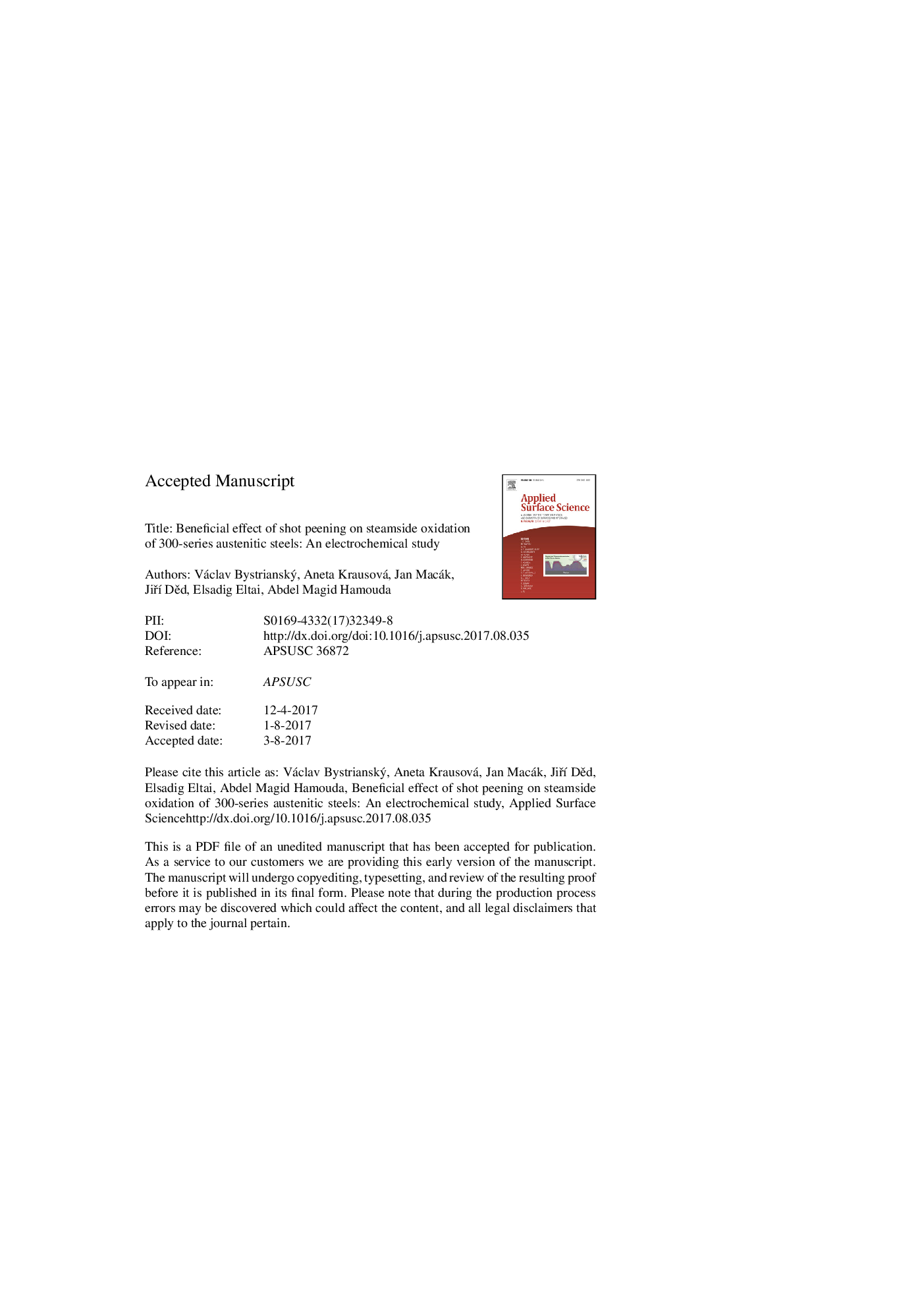| Article ID | Journal | Published Year | Pages | File Type |
|---|---|---|---|---|
| 5346832 | Applied Surface Science | 2018 | 19 Pages |
Abstract
The formation of a protective oxide ensures the good corrosion resistance of austenitic steels in high temperature steam. However after long-term interaction even the protective oxide may tend to exfoliate and cause operational problems. With shot peening believed to be an effective method for mitigating steamside oxidation and exfoliation, we compared oxide layers formed on two materials: AISI 316H with a rugged untreated surface and Super304H with a shot-peened surface. In addition to conventional methods (SEM/EDS, Raman spectroscopy), Mott-Schottky analysis was used to characterize the oxide layers in order to determine the quality of the protective oxide. The oxides formed on Super 304H showed unexpected semiconducting behaviour with a significantly lower charge carrier density, thereby supporting the benefits of shot peening. Our findings extend the knowledge applicable to the design of more efficient coal-fired power plants.
Related Topics
Physical Sciences and Engineering
Chemistry
Physical and Theoretical Chemistry
Authors
Václav Bystrianský, Aneta Krausová, Jan Macák, JiÅà DÄd, Elsadig Eltai, Abdel Magid Hamouda,
